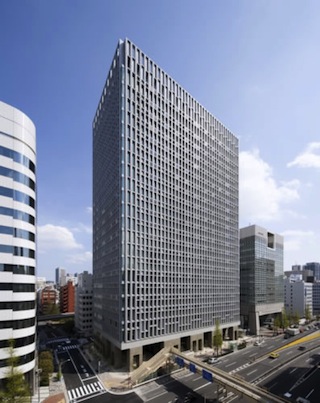One of Japan’s largest construction companies is making a bold claim.
Shimuzu Corp. believes its new Tokyo headquarters emits less carbon dioxide per square meter than any other building in the world.
Thanks to a myriad of energy efficiency technologies and renewable energy installations, the building (pictured below) uses only 38 kilograms per square meter annually, estimates Shimuzu.
The 22-story reinforced concrete building (which includes three lower ground floors) has a total floor area of 51,355 square meters.
That’s 62% less than the average emissions of most Tokyo office buildings, says the company.

Mind you, Shimuzu has an ulterior motive in disclosing this information: it developed many of the technologies and best practices used to help squeeze out emissions, and it would love to sell them to other techniques.
Here are some things that have contributed to the building’s low emissions footprint:
- Air-conditioning technology that uses radiant heat principles: The system works by absorbing the heat of people working in the office, through a water cooling system. The approach can help cut carbon dioxide emissions 30% compared with conventional systems.
- LED lighting, powered by solar: Controlled by motion and occupancy sensors, the energy needed to run the lights during the daytime comes from solar PV panels placed on the outside walls. The panels will generate 84,000 kilowatt-hours (kWhs) of electricity annually.
- Automatic window shades: The angles of the shades change automatically in order to let in sunlight, optimizing natural lighting for the building’s occupants.
Taken together, the lighting innovations reduce carbon emissions by 90% compared with traditional approaches, says Shimuzu.
The company isn’t claiming net-zero status for the building. At least not yet.
Zero energy buildings produce as much energy as they consume. In the European Union, near zero-energy buildings are mandated for public buildings by 2019 and for all construction by 2021. Similar regulations are being considered in the US and in Japan.
In May 2011, TD Bank opened the first net-zero bank branch in the US. The U.S. Department of Energy has cataloged 10 net-zero projects so far, but a drive for operational efficiency has prompted many companies to look at them more seriously for new construction.
Revenue from zero energy buildings is expected to reach almost $690 billion by 2020, according to estimates by Pike Research.
For more on zero-energy buildings:
